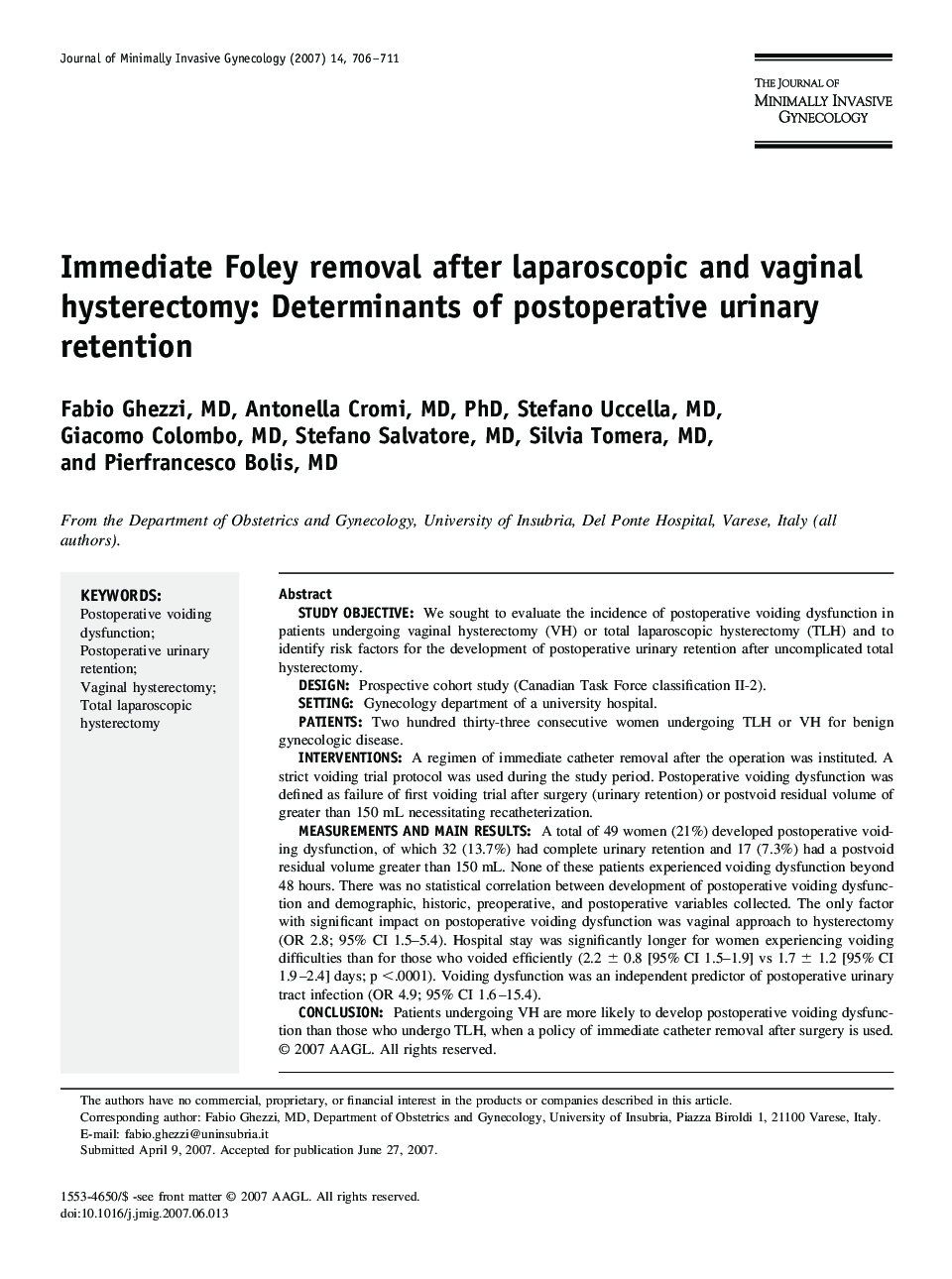| کد مقاله | کد نشریه | سال انتشار | مقاله انگلیسی | نسخه تمام متن |
|---|---|---|---|---|
| 3957884 | 1255392 | 2007 | 6 صفحه PDF | دانلود رایگان |

Study objectiveWe sought to evaluate the incidence of postoperative voiding dysfunction in patients undergoing vaginal hysterectomy (VH) or total laparoscopic hysterectomy (TLH) and to identify risk factors for the development of postoperative urinary retention after uncomplicated total hysterectomy.DesignProspective cohort study (Canadian Task Force classification II-2).SettingGynecology department of a university hospital.PatientsTwo hundred thirty-three consecutive women undergoing TLH or VH for benign gynecologic disease.InterventionsA regimen of immediate catheter removal after the operation was instituted. A strict voiding trial protocol was used during the study period. Postoperative voiding dysfunction was defined as failure of first voiding trial after surgery (urinary retention) or postvoid residual volume of greater than 150 mL necessitating recatheterization.Measurements and main resultsA total of 49 women (21%) developed postoperative voiding dysfunction, of which 32 (13.7%) had complete urinary retention and 17 (7.3%) had a postvoid residual volume greater than 150 mL. None of these patients experienced voiding dysfunction beyond 48 hours. There was no statistical correlation between development of postoperative voiding dysfunction and demographic, historic, preoperative, and postoperative variables collected. The only factor with significant impact on postoperative voiding dysfunction was vaginal approach to hysterectomy (OR 2.8; 95% CI 1.5–5.4). Hospital stay was significantly longer for women experiencing voiding difficulties than for those who voided efficiently (2.2 ± 0.8 [95% CI 1.5–1.9] vs 1.7 ± 1.2 [95% CI 1.9–2.4] days; p <.0001). Voiding dysfunction was an independent predictor of postoperative urinary tract infection (OR 4.9; 95% CI 1.6–15.4).ConclusionPatients undergoing VH are more likely to develop postoperative voiding dysfunction than those who undergo TLH, when a policy of immediate catheter removal after surgery is used.
Journal: Journal of Minimally Invasive Gynecology - Volume 14, Issue 6, November–December 2007, Pages 706–711